A delicate sponge cake filled with jam and cream, this Victoria sponge cake recipe is perfect for any occasion. Sometimes referred to as Victoria sandwich or Victoria sandwich cake, this cake is a classic British dessert recipe. Named after Queen Victoria, who was apparently quite fond of it for afternoon tea, it was initially baked into a long loaf and cut into little delightful finger sandwiches!
Originally made with only eggs, the addition of baking powder after its invention in the mid-1800s made making the Victoria sponge much easier to make as it yields a more reliable cake batter for a light and fluffy but still buttery cake every single time. The airy lightness of the sponge cake layers paired with the sweet jam and whipped cream makes for such a wonderful treat that everyone will love. Want another treat that’s perfect for afternoon tea? Try my English tea sandwiches recipe, petit fours recipe, or financier recipe.
What You Need to Make This Recipe
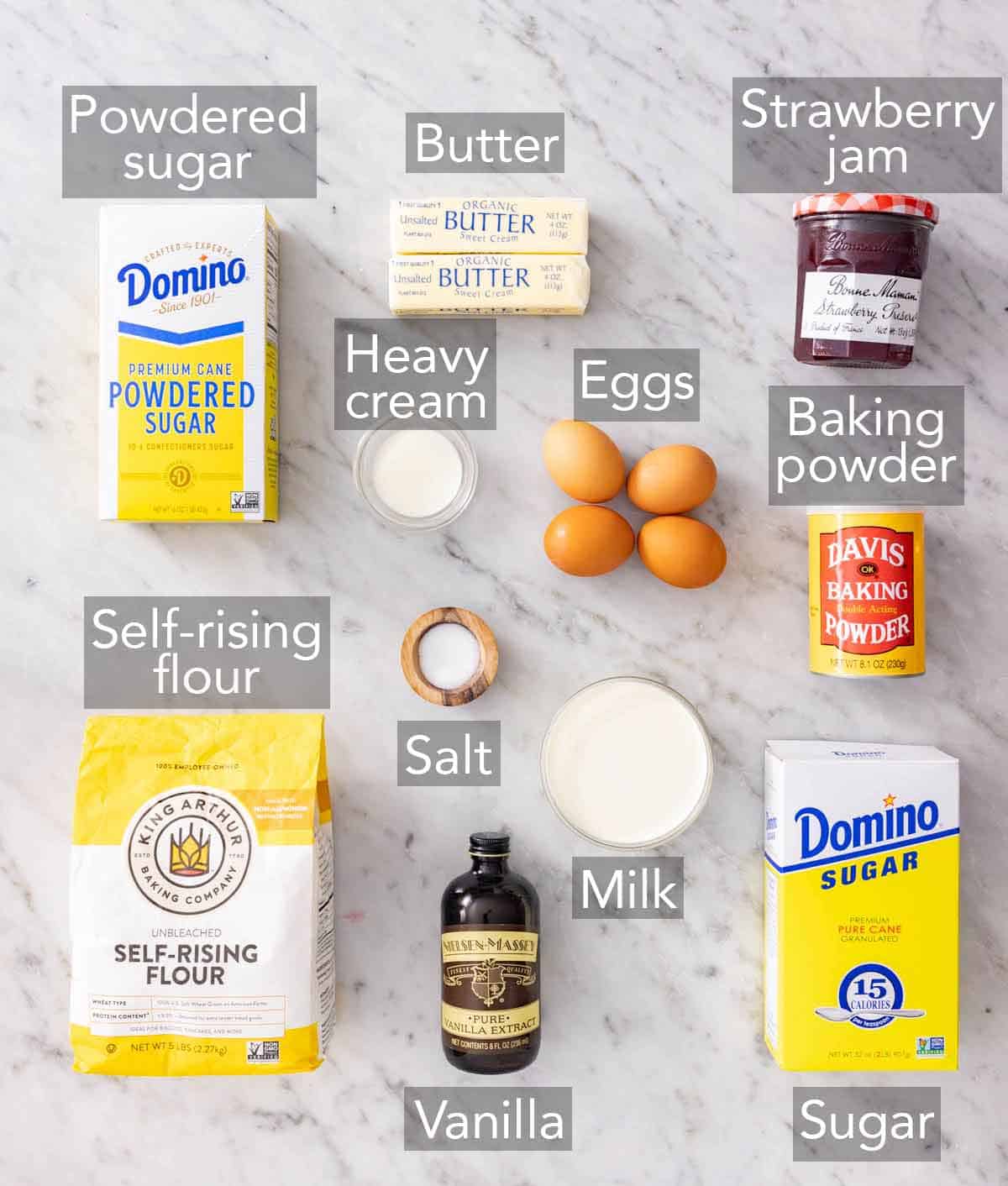
Self-rising flour — this is flour that has baking powder and a bit of salt already added, yielding light and tender cake layers. Make sure the flour has not expired, as the baking powder in the flour will be less efficient.
Baking powder — if you use a brand of self-rising flour other than the one I’m using (King Arthur), add the baking powder. Skip it if you are using King Arthur.
Butter — use unsalted butter to avoid the cake becoming too salty as the recipe has salt added, and there’s salt in self-rising flour. Make sure the butter is soft enough so your finger leaves a dent when you press into it. It’ll be challenging to cream cold butter.
Eggs — make sure you have enough eggs! All the eggs will help your cake rise and become light and fluffy.
Heavy cream — it is vital to use heavy cream with a fat content over 35% to ensure that the whipped cream will thicken. Also, the heavy cream needs to be cold as it’ll stay emulsified longer when cold.
Powdered sugar — also labeled as icing sugar or confectioners’ sugar, you’ll need this as a sweetener for the whipped cream.
Strawberry jam — I love using strawberry jam for a classic Victoria sponge cake, but you can always change it to your favorite jam, such as raspberry or blackberry jam. Make sure to use a good quality jam. See my homemade strawberry jam recipe to make your own!
How to Make Victoria Sponge Cake
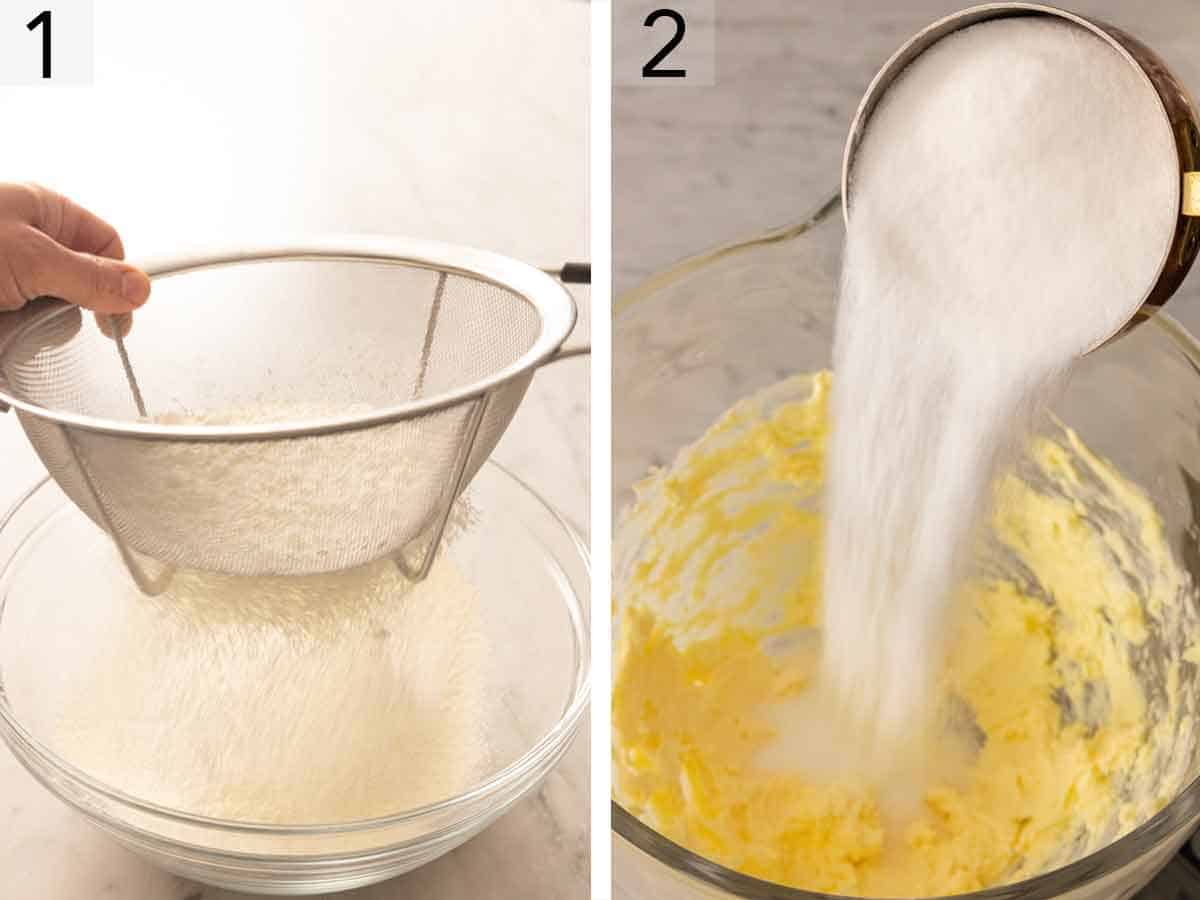
1. In a medium bowl, sift the flour, baking powder, and salt together.
2. In the mixing bowl of a stand mixer fitted with the paddle attachment, beat the butter and sugar together on medium-high speed just until smooth and combined.
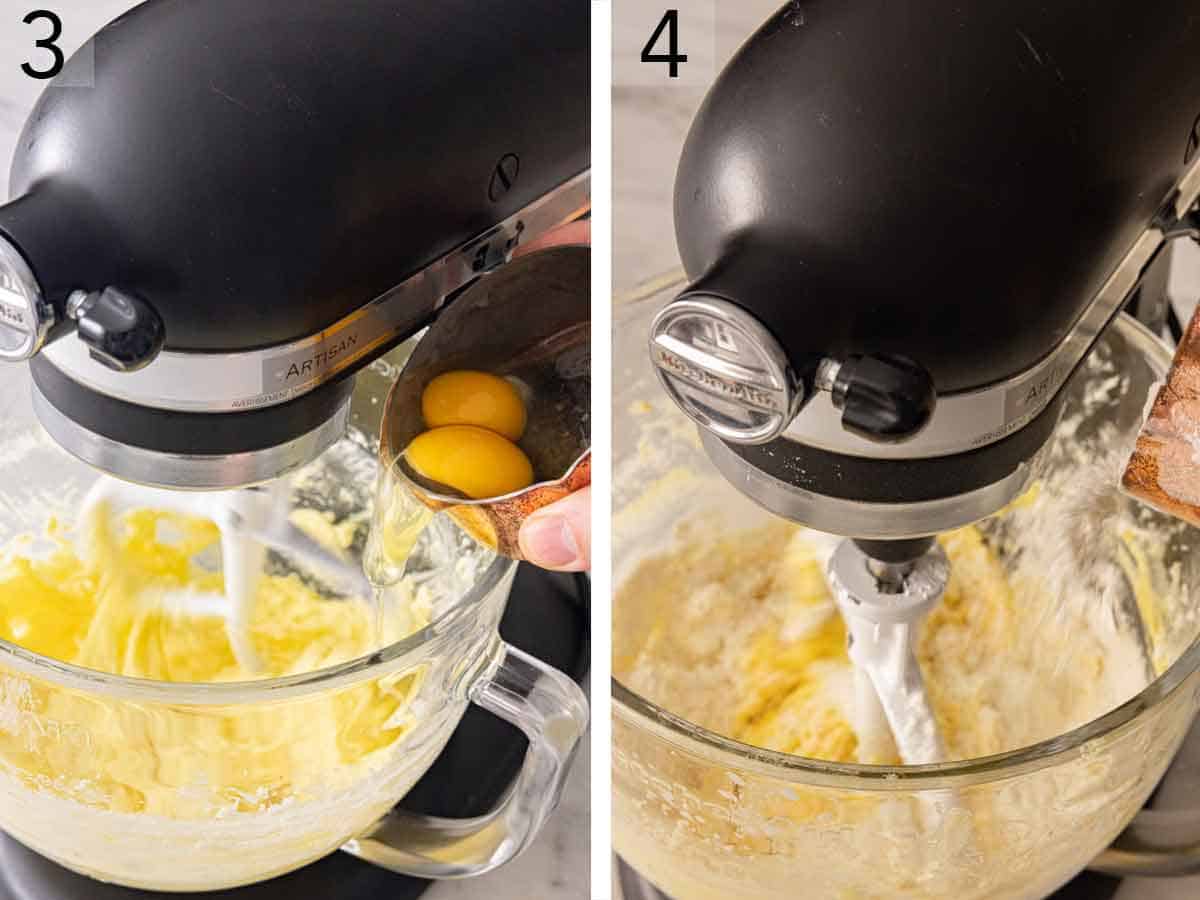
3. Beat in the eggs one at a time, stopping and scraping down the bowl occasionally. Then, beat in the milk and 1½ teaspoon of vanilla.
4. Slowly beat in the flour mixture on low speed. Beat just until combined, and the batter is thick but smooth. Divide the batter between the prepared cake pans and bake for 25 to 30 minutes. Let the cakes cool in the pans on a wire rack.
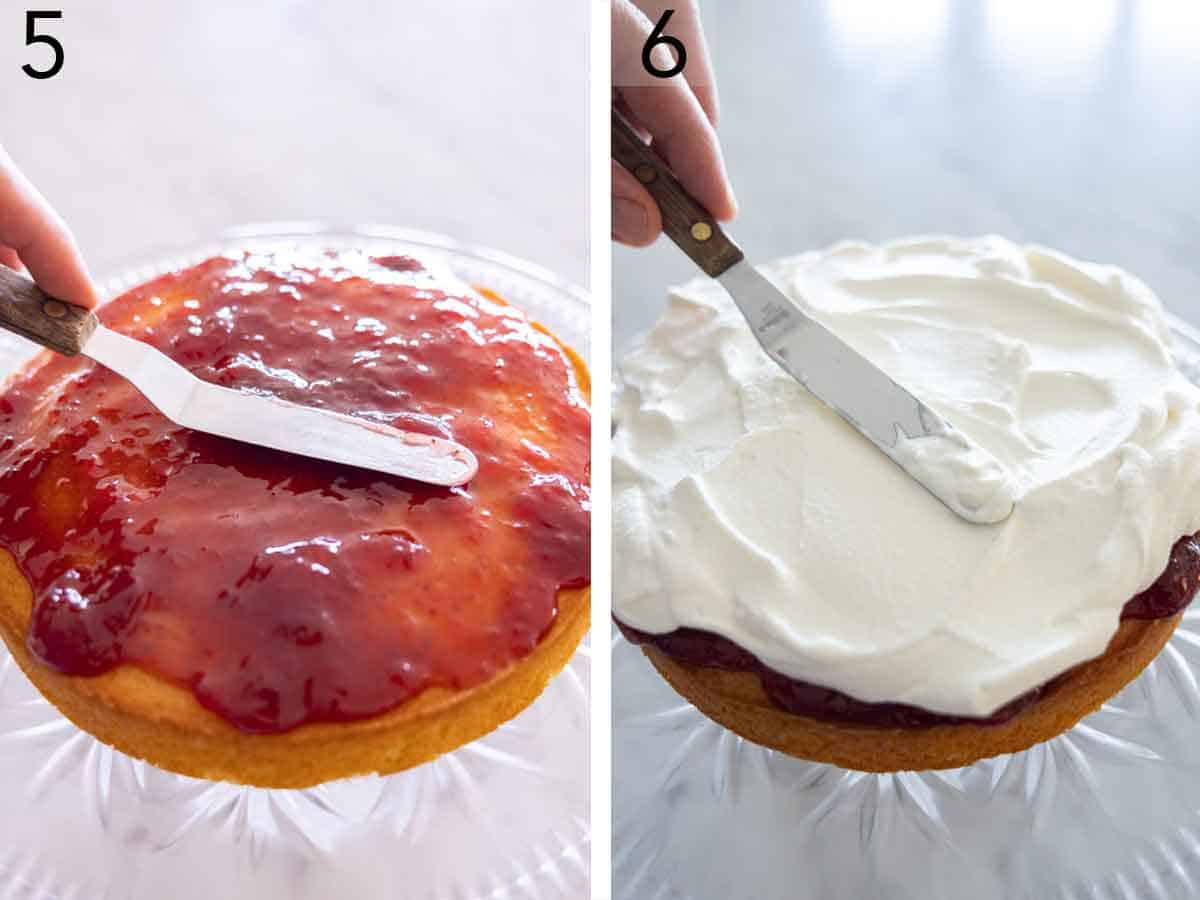
5. Place one cake on a serving plate. Spread the strawberry jam on top.
6. Spread homemade whipped cream over the jam. Top with the other cake layer. Dust the top of the Victoria sponge cake with additional confectioners’ sugar before serving.
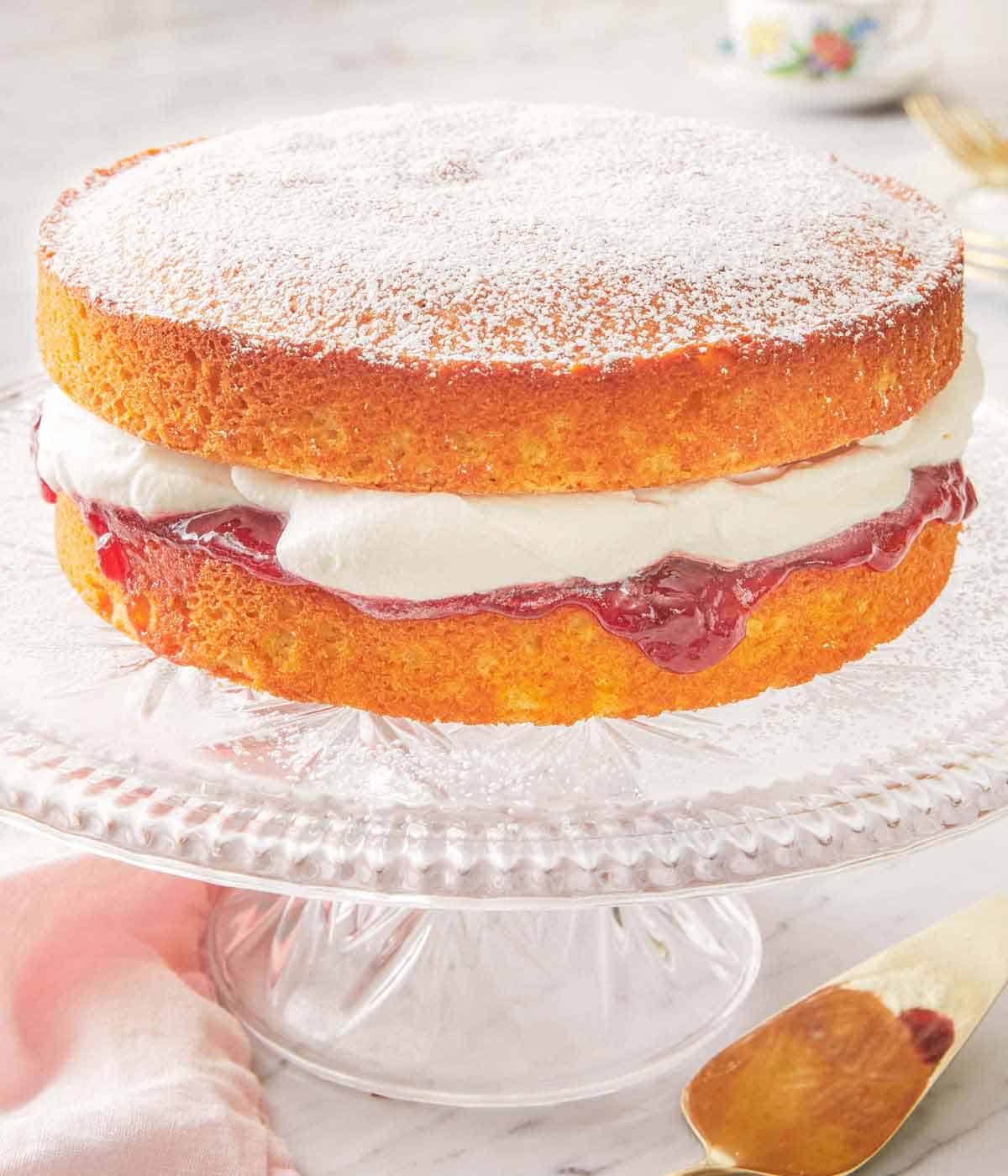
Pro Tips for Making This Recipe
- King Arthur Self-Rising flour is more reactive than other brands and ends up sinking in the oven when extra baking powder is added, whereas other brands require the baking powder for an extra lift. While King Arthur is still an excellent flour brand, just omit the baking powder in the recipe! If you happen to forget and your cakes sink slightly in the center, flip the top cake layer bottom-side up, and it will be your little secret.
- For the most accurate results, I recommend purchasing a digital kitchen scale to weigh the flour. However, if you don’t have a scale, fluff your flour with a spoon and then spoon it into your cups before leveling it off. This method is the best way to measure flour without overfilling the measuring cup, leading to a heavy sponge cake.
- Tap the cake pan on the counter a few times to pop any air bubbles and level out the batter in the pan for an even bake.
- Careful not to overmix the batter as the cake will come out dense. One way to avoid overmixing is to have room-temperature ingredients. So ingredients such as eggs, butter, and milk from the fridge should be brought out ahead of time. If you forgot to take your eggs out of the refrigerator ahead of time, you could quickly bring them to room temperature by placing them in a large bowl and covering them with warm tap water for 5 minutes. For the butter, you can cut them into small cubes, so they come to room temperature faster.
- Avoid opening the oven to check on the cake as it bakes. The cold air from the kitchen will cause the cake to sink in the oven.
- Make sure the cakes are thoroughly cooled before adding the jam and whipped cream, as the heat will cause the filling to melt and ooze out.
- Don’t skip sifting the dry ingredients. Getting rid of any clumps in the flour will ensure that you have a consistent texture to the sponge cake.
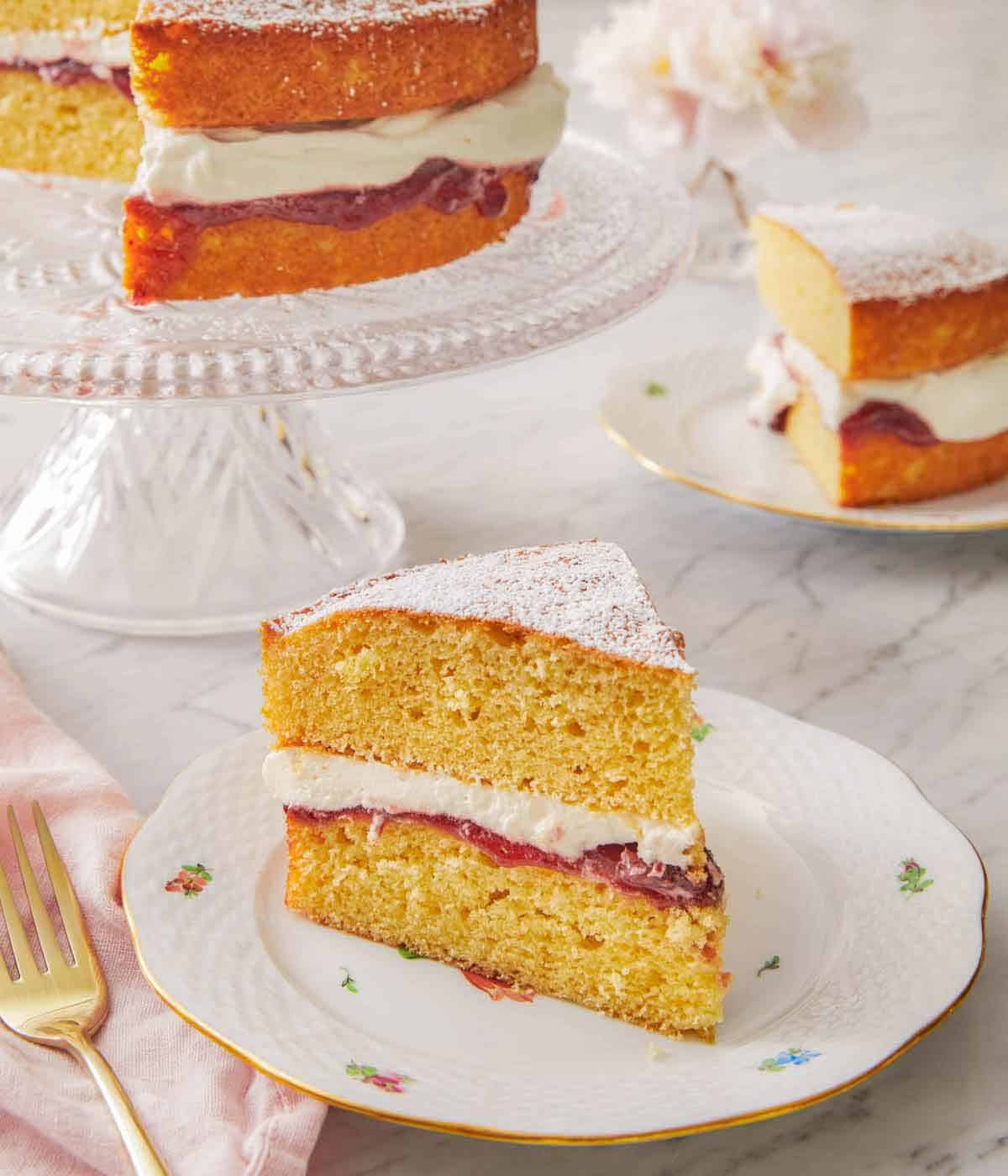
Frequently Asked Questions
What if I don’t have self-rising flour?
If you don’t have self-rising flour, you can substitute it with all-purpose flour and 1¼ teaspoons of baking powder per cup of flour. So in my recipe, use 2 cups of all-purpose flour and 2½ teaspoons of baking powder (omit the additional ¼ teaspoon of baking powder called for in the recipe),
How do I store this?
It would be best if you enjoyed the Victoria sponge cake the same day you assembled it. However, you can store any leftovers covered and refrigerated for up to 3 days. Over time, the jam and whipped cream filling will soak into the cake, causing the crumb to become a little soggy.
Can I freeze this?
I recommend only freezing the cake layers and assembling the cake with the jam and whipped cream right before serving. Make sure to allow the cake to cool to room temperature before wrapping it tightly with plastic wrap and then tin foil. Store the cake layers for up to 3 months. When ready to eat, thaw in the fridge overnight, bring to room temperature, then add the jam and whipped cream.
If you’ve tried this Victoria Sponge Cake recipe, then don’t forget to rate the recipe and let me know how you got on in the comments below, I love hearing from you!
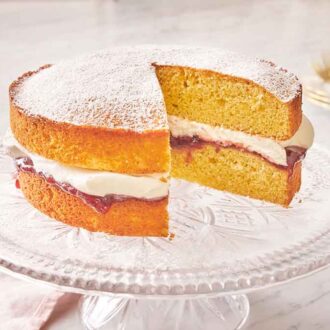
Victoria Sponge Cake
Video
Equipment
- 2 (8-inch) round cake pans
- Parchment paper
- Mixing Bowls
- Electric mixer or stand mixer
- Wire cooling rack
Ingredients
- 2 cups self-rising flour (240g)
- ¼ teaspoon baking powder*
- ¼ teaspoon salt
- 1 cup unsalted butter softened (227g)
- 1 cup plus 2 tablespoons granulated sugar (225g)
- 4 large eggs room temperature
- 1 tablespoon whole milk
- 2 teaspoons vanilla extract divided
- ½ cup heavy cream (120ml)
- 1 tablespoon confectioners’ sugar plus more for dusting
- ⅓ cup strawberry jam (80ml/110g)
Instructions
- Preheat the oven to 350F. Grease two 8-inch round cake pans with butter and line the bottoms with parchment paper.
- In a medium bowl, sift together the flour, baking powder, and salt. (Omit baking powder if using King Arthur self-rising flour.)
- In a large mixing bowl or the bowl of a stand mixer fitted with the paddle attachment, beat the butter and sugar together on medium-high speed just until smooth and combined. Beat in the eggs one at a time, stopping and scraping down the bowl occasionally. Beat in the milk and 1½ teaspoons of vanilla.
- With the mixer on low speed, gradually beat in the flour mixture just until combined and the batter is thick but smooth. Divide the batter between the prepared cake pans and smooth with a spatula.
- Bake for 25 to 30 minutes or until the top is golden brown, the cake springs back when gently pressed in the center, and the edges are starting to pull away from the sides of the pan. Let the cakes cool in the pans on a wire rack. Carefully remove them from the pans and peel off the parchment paper.
- In a medium mixing bowl, beat the cream, confectioners’ sugar, and remaining ½ teaspoon of vanilla on medium speed just until stiff peaks form.
- Place one cake on a serving plate. Spread the strawberry jam on top. Spread the whipped cream over the jam. Top with the other cake. Dust the top with additional confectioners’ sugar before serving. Store any leftovers covered and refrigerated for up to 3 days.
Notes
- *King Arthur Self-Rising flour is more reactive than other brands and ends up sinking in the oven when extra baking powder is added, whereas other brands require the baking powder for an extra lift. While King Arthur is still an excellent flour brand, just omit the baking powder in the recipe! If you happen to forget and your cakes sink slightly in the center, flip the top cake layer bottom-side up, and it will be your little secret.
- For the most accurate results, I recommend purchasing a kitchen scale to weigh the flour. However, if you don’t have a scale, fluff your flour with a spoon and then spoon it into your cups before leveling it off with a knife. This method is the best way to measure flour without overpacking the measuring cup, leading to a heavy sponge cake.
- Tap the cake pan on the counter a few times to pop any air bubbles and level out the batter in the pan for an even bake.
- Careful not to overmix the batter as the cake will come out dense. One way to avoid overmixing is to have room-temperature ingredients. So ingredients such as eggs, butter, and milk from the fridge should be brought out ahead of time. If you forgot to take your eggs out of the refrigerator ahead of time, you could quickly bring them to room temperature by placing them in a large bowl and covering them with warm tap water for 5 minutes. For the butter, you can cut them into small cubes, so they come to room temperature faster.
- Avoid opening the oven to check on the cake as it bakes. The cold air from the kitchen will cause the cake to sink in the oven.
- Make sure the cakes are thoroughly cooled before adding the jam and whipped cream, as the heat will cause the filling to melt and ooze out.
- Don’t skip sifting the dry ingredients. Getting rid of any clumps in the flour will ensure that you have a consistent texture to the sponge cake.



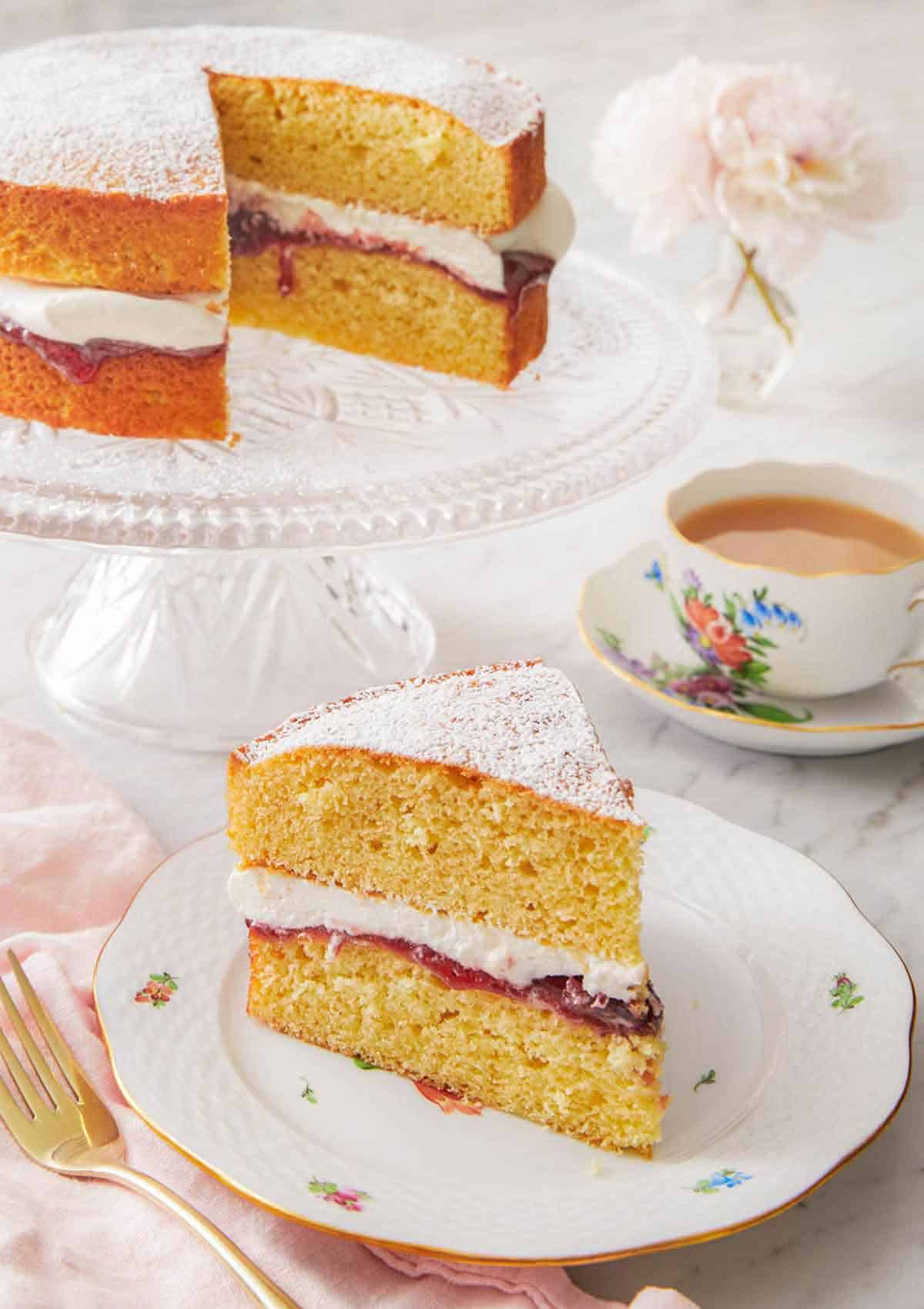
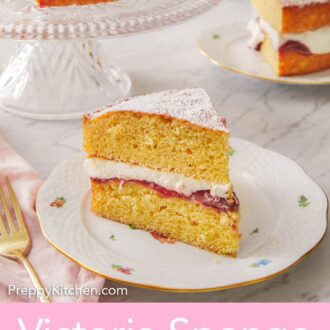
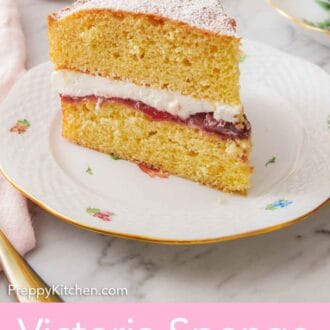
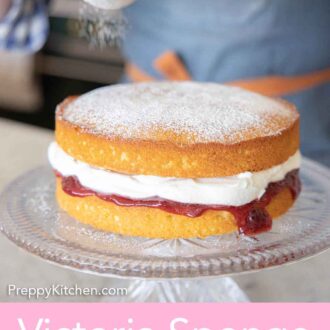
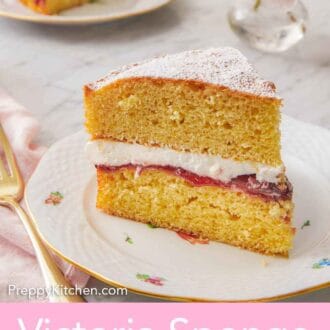
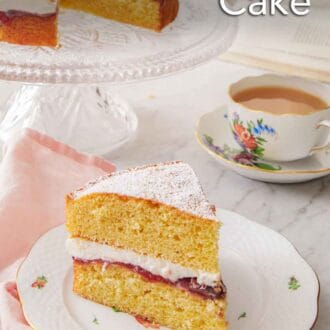
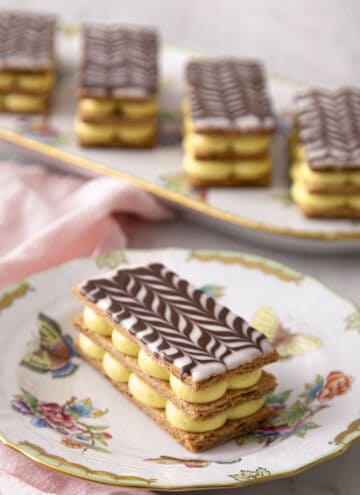
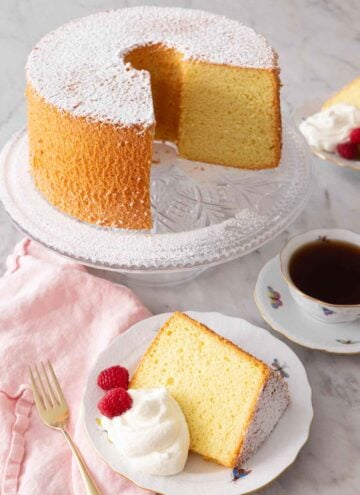
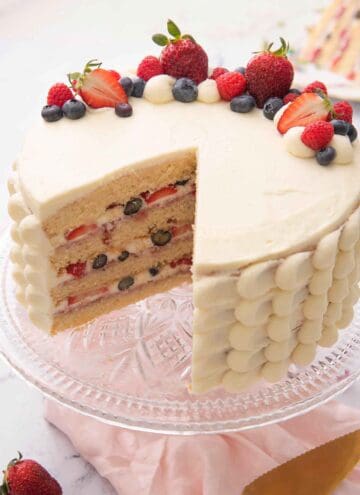

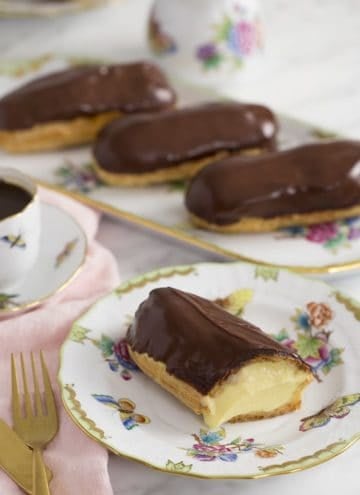

Amanda Holmes says
Great recipe! Always love your videos!
Thank you!
Sonia says
Exactly the right recipe that turns out to be perfect every time!